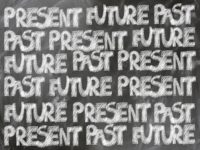Merging Restoration Past with Marketing Future – Coming Full Circle
For restoration professionals, marketing is not only about connection, it’s about perceptions.

Photo: Getty Images
I have vivid memories of what it was like to grow up as a child in the restoration industry. From my birth up until about the age of 20, my dad owned a local franchise office of one of the better-known national restoration companies. Much of my upbringing is littered with memories that involve this industry in one way or another, from the national conventions we attended to my first job as a cleaning technician.
My most notable early memory of the restoration industry involved a specific flyer marketing the franchise’s commitment to helping communities after catastrophic events. The image on the cover showed a home surrounded by waters rising to just below the roofline, while the family that lived there was huddled on top of the roof waiting for help to arrive — to save them. I remember finding this piece of marketing collateral in my dad’s work vehicle while we were caught in the middle of our own ‘flash flood’ caused by torrential rainfall.

Photo: Stichter family photo
As I reflect back on my childhood as a “restoration kid” I realize now that I only understood a small extent of the work of the family business. However, that picture on the flyer, as well as the business’s constant demand of my dad’s attention, shaped many of my feelings toward the industry. I saw the restoration industry as a career that dealt with scary scenarios and that took business owners from their family time. It was that perspective that I carried with me into adulthood and into my career path. I vowed I would not find myself involved with restoration in any way.
It has now been over 15 years since my parents let go of their franchise and, lo and behold, I now handle digital marketing for restoration companies around the country — the exact field I was raised in and committed not to work in. However, as a result of my career path, I have had a very profound change in my perspective on the industry. My father’s dedication to restoration work, paired with his personal sacrifice of family time, showcased the critical role of the restoration industry to selflessly serve others in their most vulnerable moments. Taking it a step further, marketing in restoration isn’t just about selling services and making money; it’s about creating meaningful connections between those who can help and those who need help.

Photo: Stichter family photo
In the middle of a loss, people aren’t just looking for a service; they’re seeking assurance, empathy, and, ultimately, a path to recovery. While the image of that flyer mentioned earlier was burned into my brain through pure terror as a child, I realize now that it wasn’t simply a promotional tool meant to show a company’s commitment to serve. Rather it signified a beacon of hope for the affected homeowners, signaling that help was on the way and recovery was possible. This realization underscores the importance of marketing in the restoration industry. It’s all about effectively communicating that, beyond the immediate cleanup and repair, there’s a commitment to restoring normalcy and peace of mind.
Marketing serves as the bridge between restoration professionals and the communities they help. It’s not about highlighting technical expertise or the efficiency of services offered (although these are important to note); it’s about storytelling, showcasing the human side of the business, and building trust. Strategic and empathetic marketing efforts convey the message that restoration companies are more than just service providers; they are partners in recovery, ready to support and guide families through their most challenging times.
This perspective on the restoration industry has vastly changed and shaped my approach to digital marketing in the past four years. By leveraging my personal background and understanding of restoration companies, I have been given a new passion for the role marketing plays in this industry — connecting two parties in times of need to restore lives to a place of peace. All of this, I might add, when those parties may be feeling extremely vulnerable and even suspicious.
As I embark on this new monthly column, my goal will be to connect restoration marketing to real life as it relates to serving those around us. Each month I will delve into strategies, stories, and thoughts that may challenge your thought process of marketing in this industry. My goal is to highlight how effective marketing can not only drive business success but also play a crucial role in community recovery and resilience. From understanding the needs of those we serve to crafting messages that inspire action and hope, we’ll discover the power of marketing in bringing about real-life restoration.
From a child raised in the day-in and day-out of the restoration industry to a professional committed to enhancing the industry’s reach through digital marketing, my journey has been full of insights, transformations, and personal lessons. It’s clear to me now, more than ever, that marketing in this industry isn’t just about business growth; it’s about expanding your impact. It’s about ensuring that when a disaster strikes, families don’t see a dollar sign; they see a helping hand. And that’s truly a mission that’s worth dedicating oneself to, just as my father did, all those years ago.
Looking for a reprint of this article?
From high-res PDFs to custom plaques, order your copy today!






